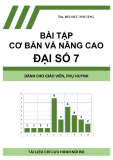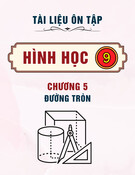
VOCABULARY SET 35: PUBLIC
TRANSPORT
Vocabulary:
1. albeit (conjunction): m cặ dù
2. dedicated line (np): đng điườ riêng
3. effective - ineffective (adj): hi u qu - không hi uệ ả ệ quả
4. governmental spending (np): chi tiêu chính phủ
5. implement (v): thi hành, th cự hi nệ
6. individual vehicle (np): ph ng ti n cáươ ệ nhân
7. interrupt (v): làm gián đo nạ
8. intersection (n): ngã t , đi m giaoư ể nhau
9. means of transport (np): ph ng ti n điươ ệ l iạ
10. measure (n): bi n pháp, tiêu chu n đánhệ ẩ giá
11. meet the demand (collocation): đáp ng nhuứ c uầ
12. mitigate (v): làm gi mả b tớ
13. persist (v): ti p t c, daiế ụ d ngẳ
14. punctuality (n): đúng giờ
15. sustainable - unsustainable (adj) - sustainably (adv): b n v ng - không b n v ng - m t ề ữ ề ữ ộ
cách b n v ngề ữ
16. tackle (v): gi iả quy tế
17. traffic congestion (collocation): n n ách t c giaoạ ắ thông
18. traffic intensity (np): m t đ giaoậ ộ thông
Exercises:
Task 1: Write sentences from given cues. Make changes to the cues when needed.
1. intersection / line / the graph / mark / point / where / we / start / make / profit.
2. measure / design / improve / car safety.
3. senator / thoroughly / squelch / journalist / who / try / interrupt / him / his speech, (squelch:
ch mấ d t,ứ
làm (ai đó) im l ng)ặ
4. cold weather / be likely / persist / throughout / week.

5. It / unclear / how / mitigate / effects / tourism / this island.
Task 2: Translate from Vietnamese to English

1. Anh y đã c g ng, dù không thànhấ ố ắ công.
2. S l ng album bán ra không ph i lúc nào cũng là tiêu chu n đánh giá s thành công c a m t caố ượ ả ẩ ự ủ ộ s .ỹ
3. Khác v iớ tàu h a,ỏ tàu đi nệ không có đngườ riêng mà chung đngườ v iớ các ph ngươ ti nệ đi l iạ khác
như
ô tô, xe máy, xe đp.ạ
4. S gia tăng các ph ng ti n cá nhân càng làm n n ách t c giao thông tr m tr ngự ươ ệ ạ ắ ầ ọ thêm.
5. Đ đáp ng nhu c u đi l i c a ng i dân và gi i quy t n n ách t c giao thông, chi tiêu c a chính ể ứ ầ ạ ủ ườ ả ế ạ ắ ủ
ph c n đc đu t vào vi c nâng c p h th ng giao thông côngủ ẩ ượ ầ ư ệ ấ ệ ố c ng.ộ
Task 3: Fill in the blanks with suitable words/phrases
albeit (conjunction) measure (n)
dedicated line (np) meet the demand (collocation)
effective - ineffective mitigate (v)
governmental spending persist (v)
implement (v) punctuality (n)
individual vehicle sustainable - unsustainable (adj) - sustainably (adv)
interrupt (v) tackle (v)
intersection (n) traffic congestion (collocation)
means of transport (np) traffic intensity (np)
Some people believe the government should spend money on building train and subway lines to
reduce traffic congestion. Others think that building more and wider roads is the better way to reduce
traffic congestion. Discuss both views and give your opinion.
The methods of 1 traffic congestion have become a heated topic of controversy. Some
people argue that the construction of larger roads is the answer to the problem. However, I contend that
such a solution is 2 in the long term, while the option to construct railways and subways is a
far better 3 .
There is a common fallacy that 4 on building larger roads could 5 address
the problem of traffic congestion. An increase in road size could reduce the 6 in the short
term, but larger roads also mean that citizens are encouraged to purchase more 7 . This leads
to the fact that the roads, 8 larger, would soon be filled with intense traffic again. For
instance, traffic jams returned to Shanghai's main streets not long after they were expanded in the early

1990s. In brief, if this solution were 9 , traffic jams would still 10 in the long
run.
Rail and subway systems, however, could ensure that 11 is 12 . Unlike cars
and buses, trains are capable of transporting hundreds of people simultaneously and thus would
13 of a vast number of passengers. Moreover, trains do not have to gothrough 14
or traffic lights, and 15 ensure their travel is hardly 16 . In
other words, trains are always on time regardless of the level of traffic. This standard of 17
would encourage many people to choose railways and subways as their primary
18 , and the number of individual vehicles would decreaseaccordingly. As a result, traffic
congestion could be 19 .
In conclusion, building more and larger roads is an 20 measure, while train and subway
lines would be a much more effective solution for the problem of traffic congestion.
295 words, written by Tu Pham

Key:
Task 1:
1. The intersection of the lines on the graph marks the point where we start to make a profit.
2. These measures were/have been/are designed to improve car safety.
3. The senator thoroughly squelched the journalist who tried to interrupt him during his speech.
4. The cold weather is likely to persist throughout the week.
5. It is unclear how to mitigate the effects of tourism on the island.
Task 2: Answers may vary
1. He tried, albeit without success.
2. Record sales are not always a measure of a singer's success.
3. Unlike trains, trams do not have their own dedicated lines, but sharing the road with other means of
transport such as cars, motorbikes or bikes.
4. The increase of individual vehicles has exacerbated traffic congestion.
5. In order to meet the transport demand of citizens and tackle traffic congestion, governmental spending
needs to be invested in upgrading the public transport system.
Task 3:
The methods of (1) mitigating traffic congestion have become a heated topic of controversy. Some
people argue that the construction of larger roads is the answer to the problem. However, I contend that
such a solution is (2) ineffective in the long term, while the option to construct railways and subways is a
far better (3) measure.
There is a common fallacy that (4) governmental spending on building larger roads could (5)
sustainably address the problem of traffic congestion. An increase in road size could reduce the (6)
traffic intensity in the short term, but larger roads also mean that citizens are encouraged to purchase
more (7) individual vehicles. This leads to the fact that the roads, (8) albeit larger, would soon be filled
with intense traffic again. For instance, traffic jams returned to Shanghai's main streets not long after they
were expanded in the early 1990s. In brief, if this solution were (9) implemented, traffic jams would still
(10) persist in the long run.
Rail and subway systems, however, could ensure that (11) traffic congestion is (12) properly
addressed. Unlike cars and buses, trains are capable of transporting hundreds of people simultaneously
and thus would (13) meet the transport demands of a vast number of passengers. Moreover, trains do
not have to go through (14) intersections or traffic lights, and (15) dedicated lines ensure their travel is
hardly (16) interrupted. In other words, trains are always on time regardless of the level of traffic. This
standard of (17) punctuality would encourage many people to choose railways and subways as their
primary (18) means of transport, and the number of individual vehicles would decrease accordingly. As
a result, traffic congestion could be (19) tackled successfully.
In conclusion, building more and larger roads is an (20) unsustainable measure, while train and
subway lines would be a much more effective solution for the problem of traffic congestion.
295 words, written by Tu Pham





![Bài tập so sánh hơn và so sánh nhất của tính từ [kèm đáp án/mới nhất]](https://cdn.tailieu.vn/images/document/thumbnail/2025/20250808/nhatlinhluong27@gmail.com/135x160/77671754900604.jpg)
![Tài liệu tham khảo Tiếng Anh lớp 8 [mới nhất/hay nhất/chuẩn nhất]](https://cdn.tailieu.vn/images/document/thumbnail/2025/20250806/anhvan.knndl.htc@gmail.com/135x160/54311754535084.jpg)
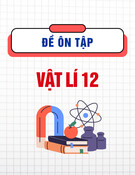
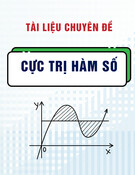
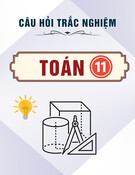

![Tài liệu Lý thuyết và Bài tập Tiếng Anh lớp 6 [Mới nhất]](https://cdn.tailieu.vn/images/document/thumbnail/2025/20250802/hoihoangdang@gmail.com/135x160/18041754292798.jpg)
